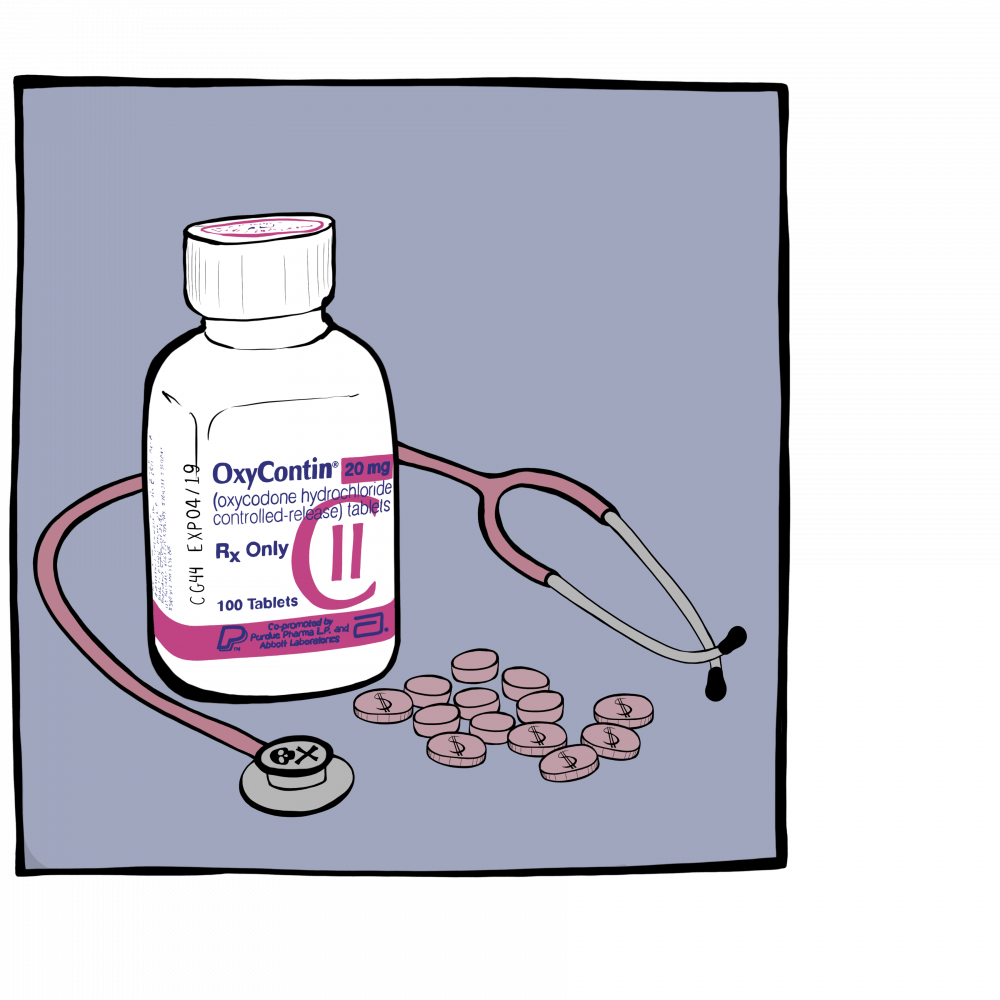The state of New York recently announced that it would investigate and launch a lawsuit against the Sackler family, whose members control Purdue Pharma, the company that produces OxyContin, for manipulating the public’s perception of prescription painkillers and contributing to the hundreds of thousands of deaths that have resulted from opioid addiction. Although the Sackler family, as well as pharmaceutical companies, have played a crucial role in the opioid epidemic, this investigation bypasses another party that is equally to blame: the physicians who have overprescribed addictive painkillers.
The Sacklers’ culpability is difficult to contest. They allegedly helped pharmacies circumvent monthly limits on prescription painkillers to increase opioid-driven profits. Similarly, members of the Sackler family are accused of creating misleading marketing campaigns that glossed over the risk of painkillers. When the investigation was first announced, implicated members transferred large amounts of money to offshore accounts, in an attempt to protect their assets.
Thus, it is clear that the Sackler family has abused its position as owner of Purdue Pharma and has contributed significantly to the opioid crisis. Accordingly, its members should be punished. Purdue Pharma’s abuse, however, would not have been possible without compliance from the physicians who prescribe painkillers.
From 1999 to 2017, over 218,000 people in the US died from prescription painkiller overdoses. Another 200,000 people died from illegal painkiller (such as heroin) abuse; such addictions often stem from initial legal painkiller abuse. The sheer number of victims suggests that physicians’ prescriptive abuse is widespread and systematic.
One cause of systematic over-prescription is physicians’ misunderstanding of how chronic pain should be managed. Rather than adopting a holistic approach to treat the causes of chronic pain, many physicians fall back on the quick fix of opioid painkillers.
Some observers have suggested that doctors receive insufficient education on pain management in medical school, particularly in regard to alternatives to opioids. Such systematic over-prescription likely stems from a lack of understanding, rather than immoral aims. Pharmaceutical companies provide other incentives, such as luxury conferences and gifts, to physicians who prescribe their products, further compounding to the epidemic.
I am not suggesting that the lawsuit against the Sackler family should be redirected towards physicians: the Sackler family and the involved pharmaceutical companies should certainly be punished for their role in the opioid epidemic. Alongside this punishment, however, physicians’ prescriptive practices must change. This approach towards the opioid crisis has received little attention in a public sphere largely focused on punishing pharmaceutical companies and their wealthy CEOs.
Many of our peers will soon attend medical school and be in a position to effect these changes. One remedy may take the form of courses in medical school and continuing education programs solely focused on pain management, so that physicians have a better understanding of when prescribing opioids is appropriate. One might argue that a pain management curriculum is not as important as traditional medical classes, such as immunology or experiential clinical courses. The importance of such an expansive education, however, extends beyond the opioid epidemic.
Members of racial minorities often experience significant bias when they visit doctors for help with managing chronic pain. Such concerns are sometimes not taken seriously. Thus, it is clear that in many regards, doctors need to be better educated on the circumstances in which any patient may or may not need painkillers.
Another solution might be a system that allows for more time with patients in order to foster better communication, so that suspicious requests for more painkillers can be recognized as such. In today’s healthcare system, when physicians often spend only a few minutes with a patient, it can be easy to miss patterns that suggest addiction and abuse, such as repeated visits in a short period of time or drastic weight loss. Even ten extra minutes with a patient might allow a doctor to pick up on these signs and shift treatment towards addiction rather than pain.
The opioid epidemic has not subsided in recent years, despite increased recognition of the patterns that led to it in the first place. Our response to the crisis has largely only targeted those in charge of the implicated pharmaceutical companies. To create lasting and widespread changes, the efforts need to spread beyond this small percentage of complicit individuals, to include the physicians who are responsible for prescribing opioids. If we reach physicians successfully, then pharmaceutical companies will finally be unable to increase their profits at Americans’ expense.
Morgan Lucey is a senior neuroscience major from Scottsdale, Ariz. She can be reached at mslucey@princeton.edu.









